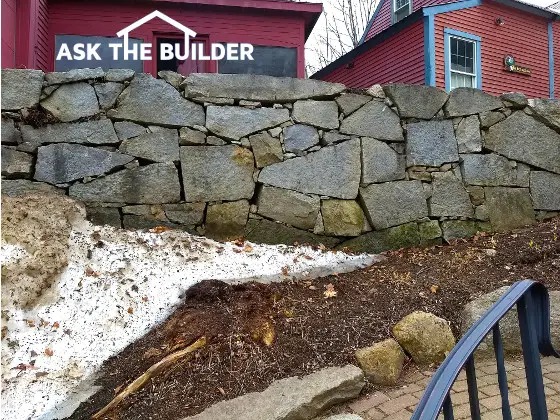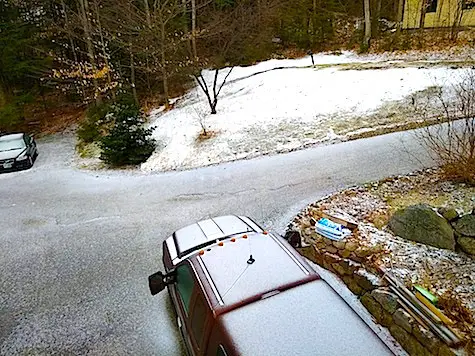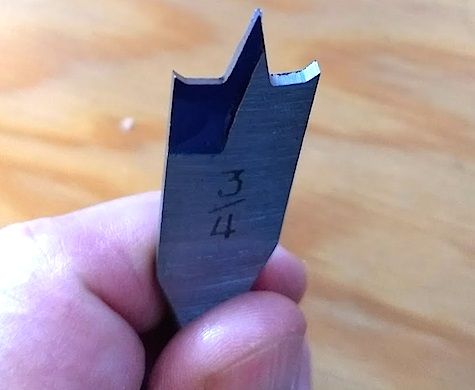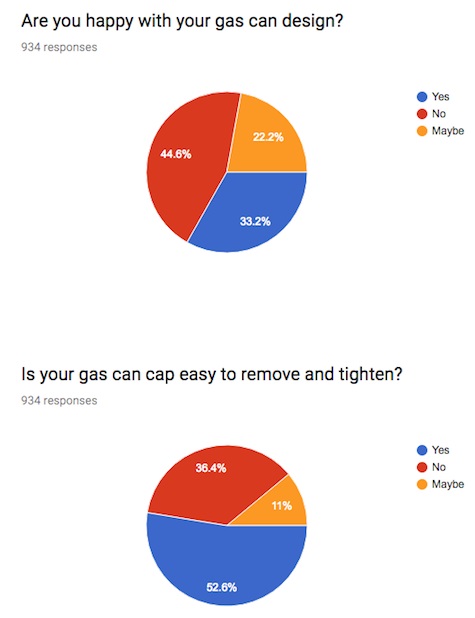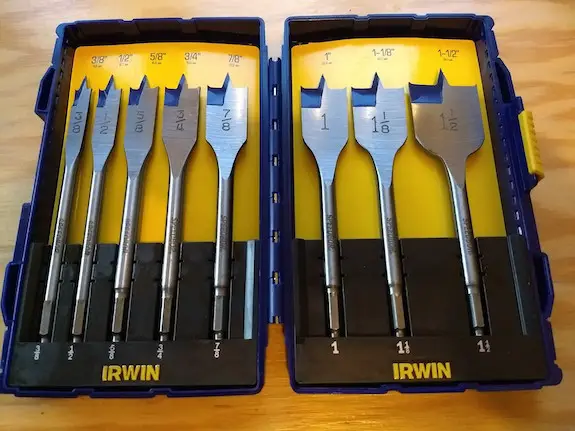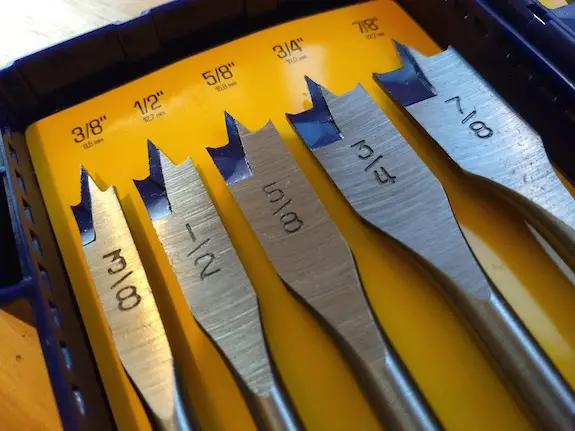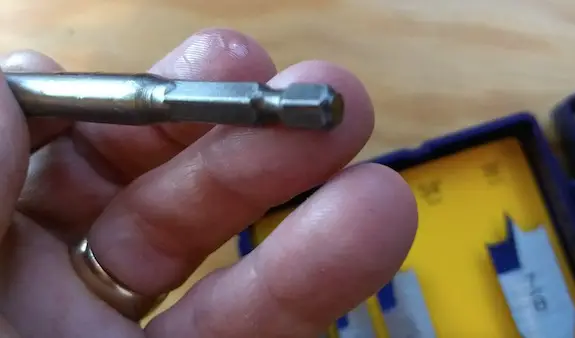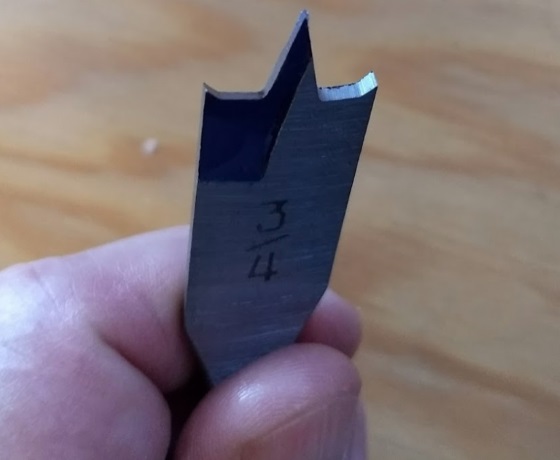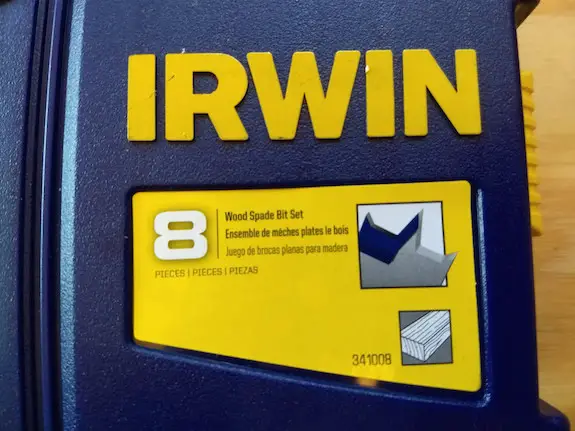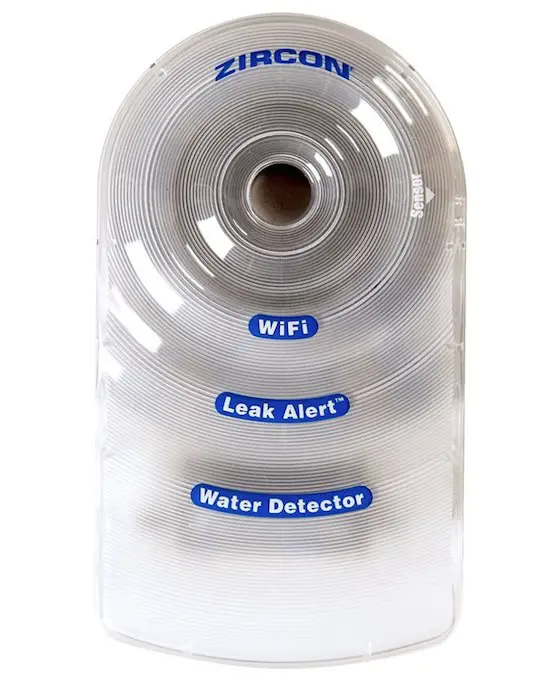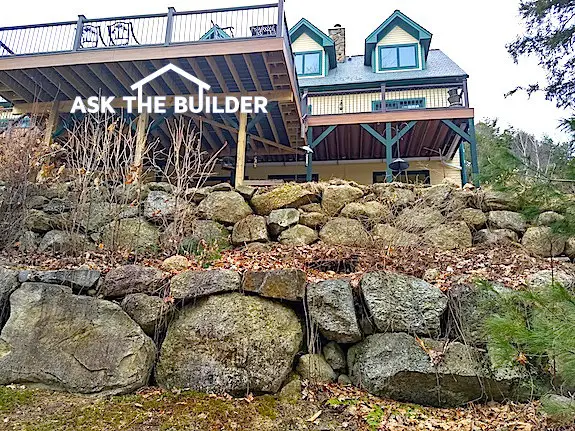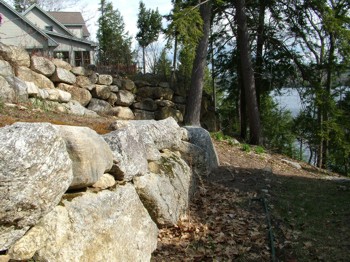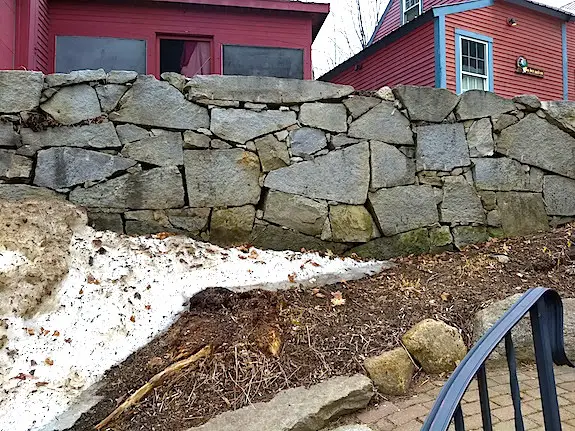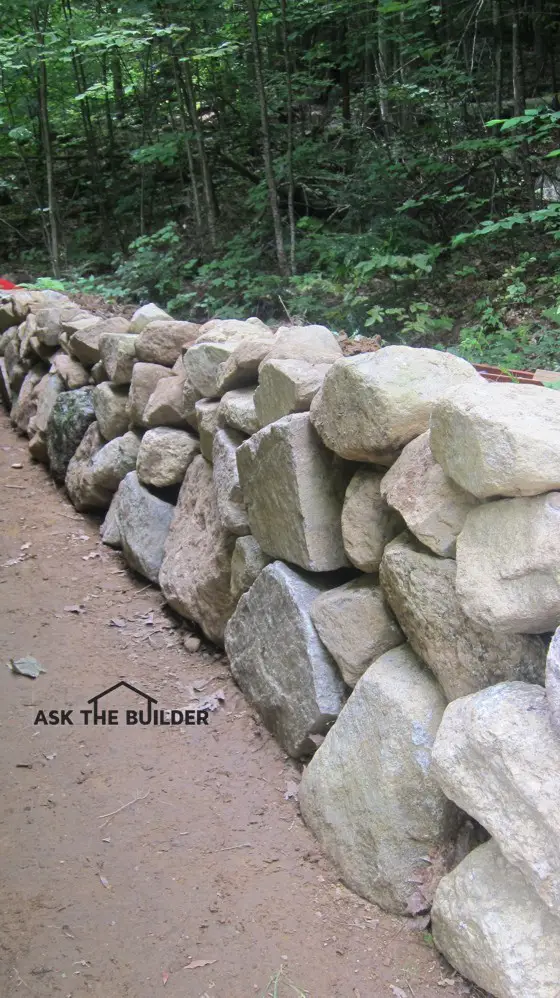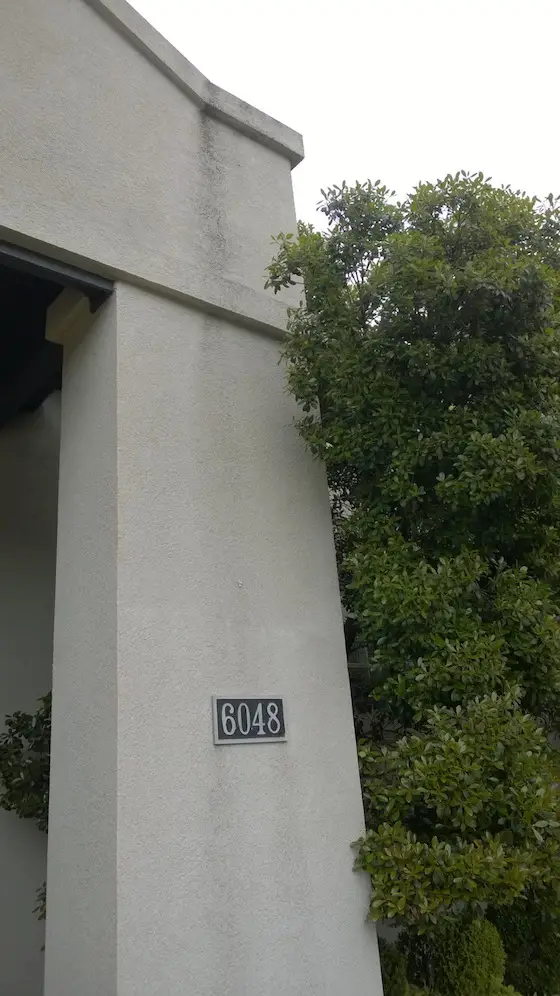
EIFS problems can be lurking behind the textured finish. Water vapor can't pass through to the air outside your home. Copyright 2018 Tim Carter
EIFS is a synthetic stucco. It adheres to the outside of your home because it contains an acrylic resin. Acrylic is plastic. This plastic allows water and water vapor to get trapped and if your home is framed with wood, the water can cause serious wood rot and mold issues.
! ! !See Author's Notes at Bottom of the Column ! ! !
Original Publication Date: October 1998 - Revised April 2018
EIFS Problems - Widespread And Sinister
DEAR TIM: My husband and I are building a new home. Our architect has suggested the synthetic stucco EIFS system.
However, I saw a TV news report that houses built with this material are suffering from wood rot. Is this true? Can we build using the EIFS system without worrying about possible damage to our new home? Marcy R., Lincolnwood, IL
Related Links
More EIFS Finger Pointing - Hundreds of Millions of Dollars
Replacing EIFS With Traditional Cement Stucco
Free & Fast Bids
CLICK HERE to get FREE & FAST BIDS from local cement stucco contractors.
DEAR MARCY: The TV news report you saw is true. Undoubtedly the product that was being discussed was barrier Exterior Insulating Finishing System (EIFS).
This product is a synthetic stucco system that was developed over twenty-five years ago. Wood rot problems are being reported in North Carolina, Georgia, Louisiana, Washington, Kentucky, Texas, California, Tennessee, Ohio, Illinois, Virginia, and numerous other states/cities.
The only barrier EIFS houses immune from the rot problem are those that never get rained on.
EIFS Problems Started When Put on Wood Instead of Steel
The barrier EIFS system mutated when it was introduced to residential building materials. For many years prior to its use on residential houses, the material was originally applied directly over concrete block and masonry structures, and to buildings that were built using steel and other non- wood products.
The actual synthetic stucco material blocks the movement of liquid water and vast quantities of water vapor. Barrier EIFS products that have been used in the past and are still being sold and marketed by several companies can trap water.
Rainwater and wind-driven rain can work their way past the acrylic polymer coating and the foam insulation that is glued directly to the wood framing and sheathing members of your house. Once the water becomes trapped between the wood sheathing and the foam insulation, rot problems begin.
EIFS Hides Hidden Problems From You
Barrier EIFS is very, very different from traditional exterior wall surfaces like wood siding, brick, traditional cement stucco, and stone. These materials often quickly signal you when water has somehow gotten between them and the wood framing and sheathing.
Painted wood siding will usually peel and blister. Brick, cement stucco, and other masonry homes will telegraph the presence of penetrating water by visible leaks inside your home or by producing efflorescence as the water leaves the masonry materials. In other words, these materials can breathe.
Barrier EFS Is Plastic Shrink Wrap
Barrier EIFS is sinister. The coating is a highly effective "shrink-wrap" that seals in trapped water that sneaks past caulk joints and other entry points. Barrier EIFS homes rarely communicate any early warning visible exterior signs that massive wood rot is present just inches away.
The developers of barrier EIFS made some basic mistakes. They disregarded the accumulated knowledge and experience of the old cement stucco craftsmen.
Hundreds Of Years Of Knowledge Kicked To The Curb
These craftsmen discovered that you could apply cement stucco to wood framed houses as long as you installed a water barrier membrane (they used asphalt saturated felt paper) and different types of metal flashings around windows, doors, and any other object that penetrated the stucco exterior.
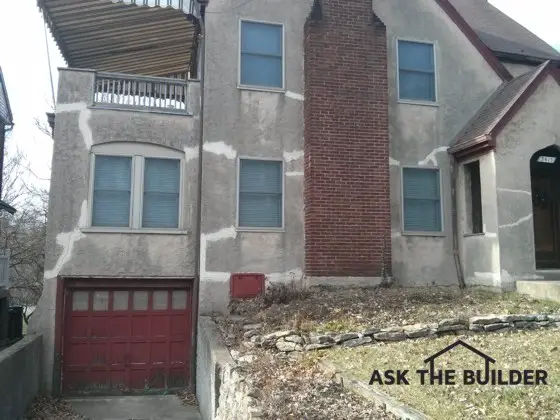
This is a traditional cement stucco home built in the 1930s. There's no wood rot. The person who tried to repair the cracks is this stucco made several critical mistakes, the first one not cleaning the stucco first! Copyright 2018 Tim Carter
The flashings collect the water and re-direct it outside. Barrier EIFS systems in place today do not have the protective water membrane or flashings. The manufacturers hope that caulk or sealants will prevent water from entering between where the barrier EIFS stops and windows, doors, pipes, vents, etc. begin. The trouble is, this same caulk also stops water from exiting the barrier EIFS!
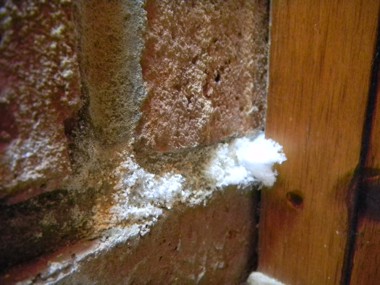
Efflorescence growing in the mortar of a brick fireplace. PHOTO CREDIT: Michael Hannum
Class-Action Lawsuits Sprouted
The problem is so severe that a class action lawsuit has been allowed (certified) in North Carolina. Other class action suits have been filed in Texas and Louisiana but the courts have not yet ruled on the certification of these suits.
Some insurance policies are also beginning to modify coverage on barrier EIFS homes. The use of traditional barrier EIFS in residential construction is not permitted by two major building code authorities (BOCA and ICBO).
Instead, they now mandate that new EIFS systems incorporate a water management drainage plane just behind the foam insulating board and the synthetic stucco.
New EIFS Systems Must Be Perfectly Installed
The new water management EIFS systems utilize the same techniques that the old cement stucco craftsmen used, however, better water membranes and flashings are available today. If you install a new water managed drainable EIFS system on your new home according to the manufacturer's specifications, you should have little or no water problems.
Because local building code authorities can modify model building codes, barrier EIFS construction may still be sold to unsuspecting builders and homeowners like you.
Certain manufacturers maintain that barrier EIFS is less expensive to install than EIFS systems with drainage, that homebuilders and contractors have confidence in their ability to "do the job right", and that the houses are being built in relatively dry climates where damage from moisture intrusion is far less likely to occur.
Unfortunately, these manufacturers don't have any "written" guidelines that tell you where it is safe to build a barrier EIFS house. As the barrier EIFS wood rot problems continue to spread and intensify, insurance executives, code officials, attorneys, progressive EIFS manufacturers, and I seem to think that perhaps barrier EIFS houses work best only in the middle of the Sahara or Atacma desert!
CLICK HERE to get FREE & FAST BIDS from local cement stucco contractors.
Author's Notes:
February 2002
A recent Virginia Circuit Court judge has just ruled that Dryvit's Outsulation is defective. He concludes "even if the Outsulation were perfectly applied according to Dryvit's specifications, instructions, and details, the patented Outsulation 'system' consisting of the method of application and the component parts, is intrinsically defective and thus, is not merchantable." This information was provided to me by the webmaster of another website called eifsfacts.org.
January 1999
Whew, what a column! After this column appeared nationally in the fall of 1998, I received scathing letters from barrier EIFS manufacturers, their representatives, installers, distributors, etc. I knew the letters would come, and I anticipated the content of the letters. Just as I expected, the barrier EIFS companies and those whose livelihood is tied to them tried to deflect the blame and responsibility for the rot problems we are seeing. The reason is simple. Money. There are huge dollars at risk in this maelstrom.
Here are some facts you need to know:
When I began research for this column I sent 14 written questions to the association (EIMA) that represents many of the barrier EIFS manufacturers. The written responses to the questions were shallow and contained statements that simply were not true.
The president of EIMA, Mr. Stephan E. Klamke, refused to be interviewed by me for the column.
The barrier EIFS manufacturers could not produce any written guidelines telling you or any other person where it was not advisable to build a barrier EIFS home. I asked for these guidelines based upon a statement that an EIMA representative had made. This person indicated that EIMA felt that it was not a good idea to build barrier EIFS homes in areas that experience high levels of humidity. I asked him, "So where is the line drawn? Where is it too humid to build a barrier EIFS home?"
The chief counsel for Dryvit Systems, Inc. - Mr. Kenneth J. Nota - wrote numerous Letters to the Editor to many of the papers that ran my column. His letters contain numerous statements that simply are not true.
Just before the above column ran in papers across the nation, Senergy - a major player in the EIFS market resigned from EIMA over fundamental differences in opinion over how the barrier EIFS controversy was being handled by EIMA. Senergy was one of the key members in EIMA!
I worked for several months with the producers of Dateline NBC on a very important barrier EIFS report. They performed random testing of barrier EIFS houses on the East Coast and uncovered severe wood rot.
This barrier EIFS storm is far from over. Stay tuned to AsktheBuilder for the facts!
January 2007
We received an email letting us know that BASF/Senergy is currently a member of EIMA.
When we wrote this column we checked with EIMA, and as of 1996, they were not a member to the "BEST OF OUR KNOWLEDGE."
But as of January 23, 2007, we find that they are listed as a member.
Over the years, I've seen many different spellings of efflorescence. Here's my growing list: effervesce, effervescence, effervescent, effleresants, effloreflance, efflorescence, efflorressance, effluorescence, eflorescence, eflorescents, ellforesce and ifflorescence.
